Pork adobo is a popular Filipino dish consisting of pork slowly braised in a mixture of soy sauce, vinegar, and garlic. It is a great introductory main course to Filipino cuisine!
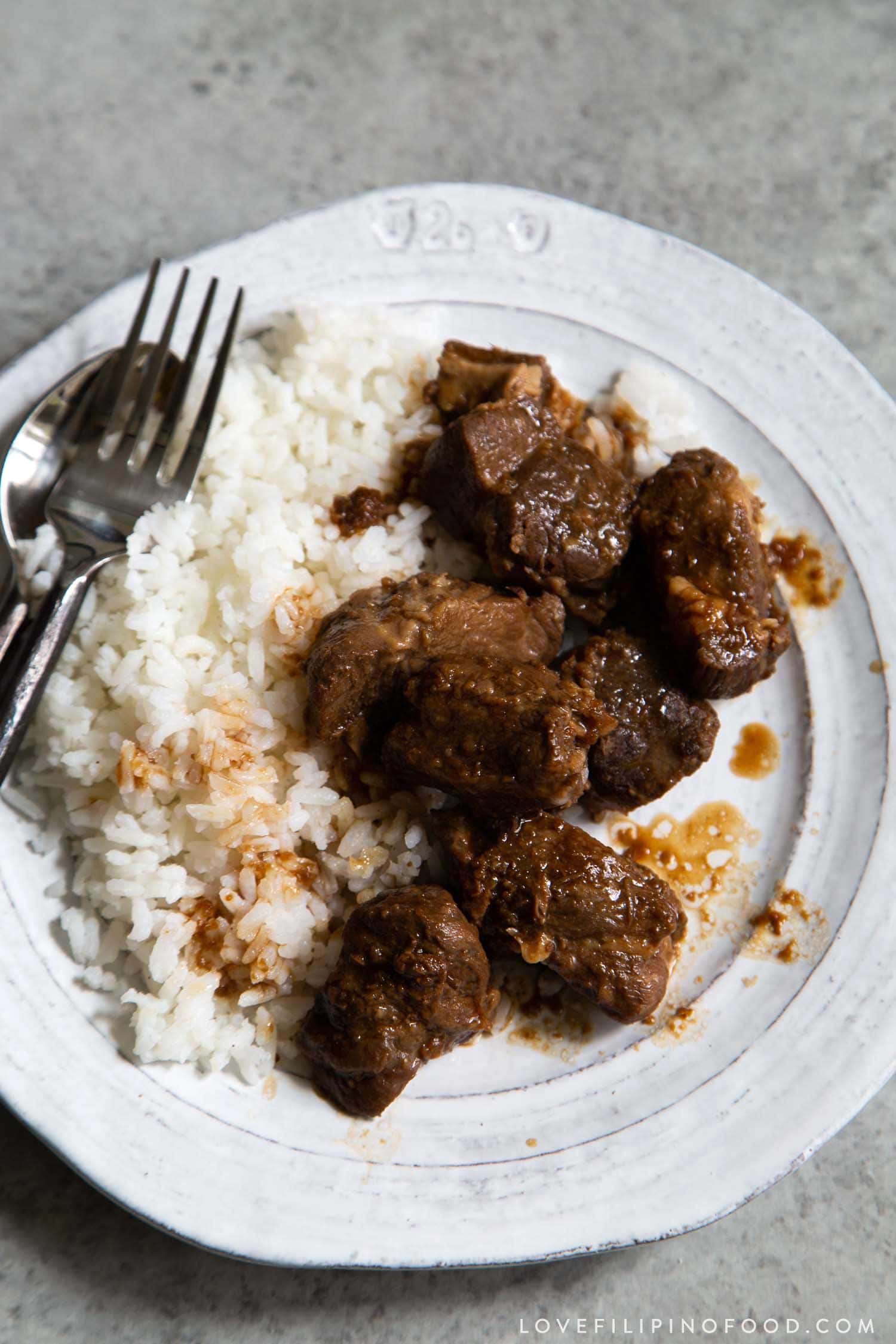
Adobo is the quite possibly the most well known Filipino dish. It is a unique dish that is salty, tangy, and full of umami flavor. Adobo is best enjoyed with a heaping scoop of freshly cooked jasmine rice.
There are many regional variations of Filipino adobo. These differences range in protein choice and seasonings.
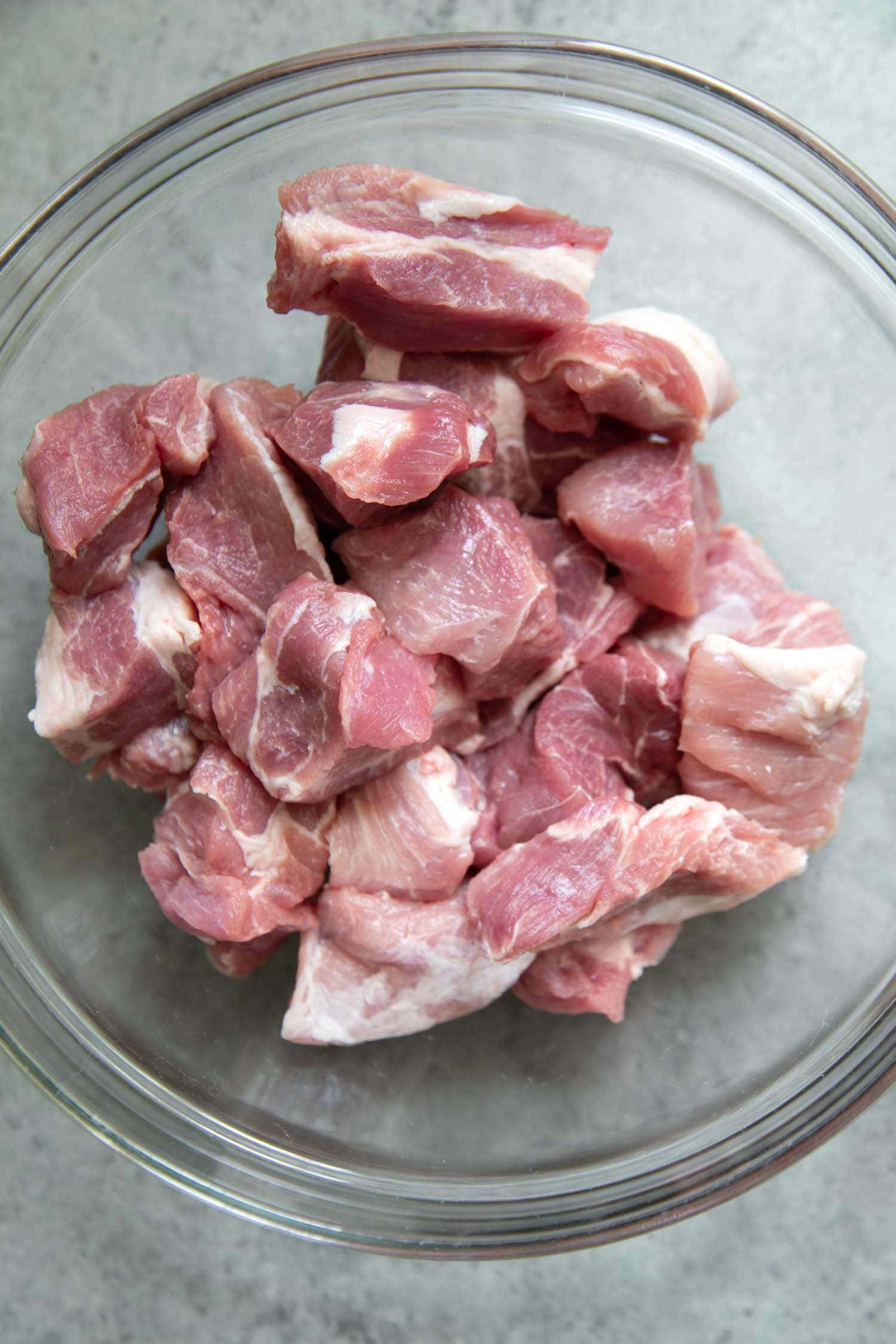
What meats can you use to make Filipino adobo?
This recipe uses pork shoulder, also labeled as pork butt or Boston butt. Pork adobo is traditionally made with fatty pork belly, or a combination of pork belly and chicken.
Pork shoulder is great for braised dishes like adobo. It has enough fat to make the dish tasty, but not as overwhelming as pork belly.
Pork shoulder benefits from long cooking, producing a flavorful pull-apart tender meat.
Asides from pork, adobo can also be made with the following proteins:
- Chicken
- Beef
- Goat
- Fish
- Shrimp
- Tofu
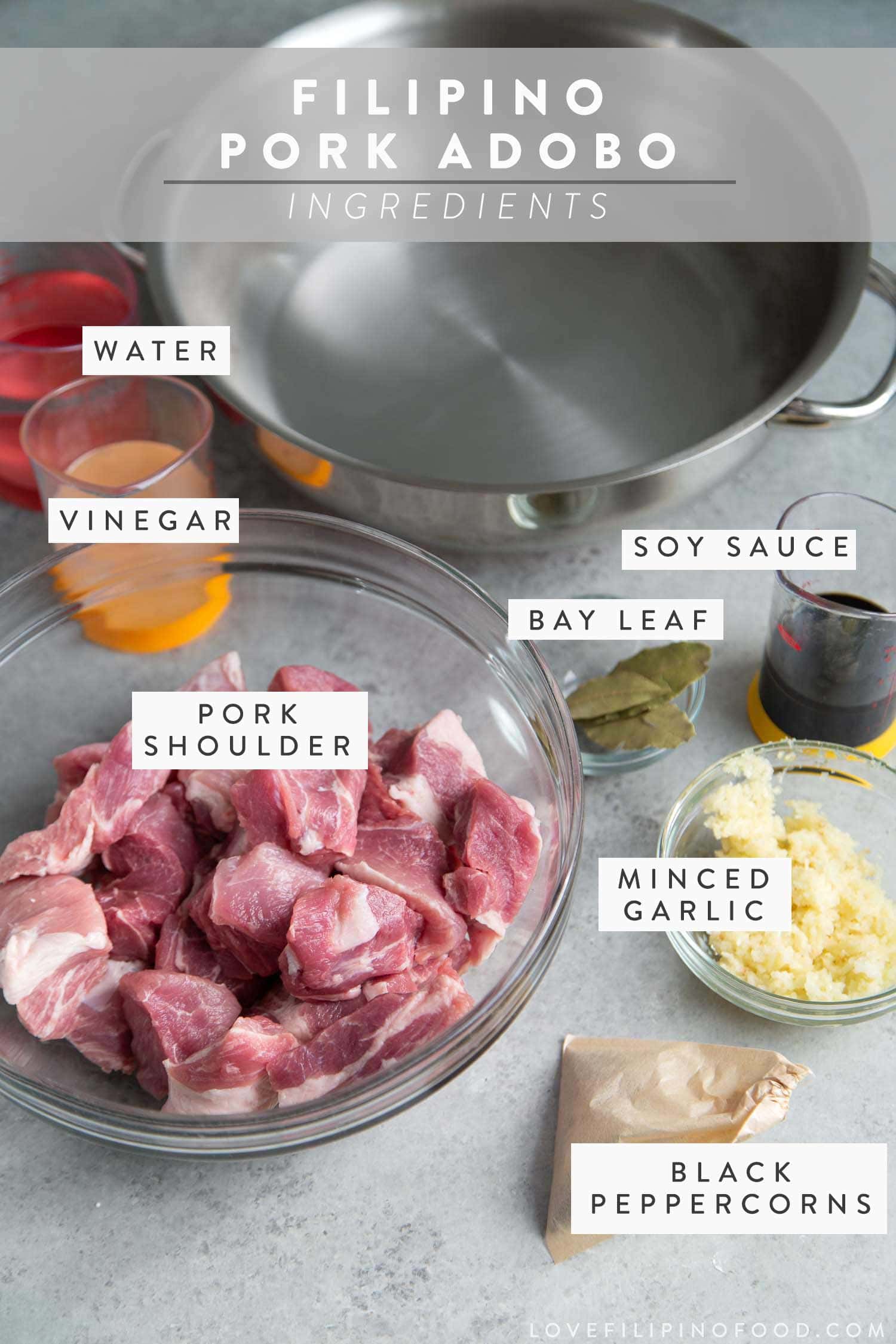
Adobo Ingredients
- Soy Sauce
- Vinegar
- Garlic
- Bay Leaf
- Black Pepper
Other variations of adobo contain one or more of the following: coconut milk, onions, sugar, tomatoes, jalapeño or other chili peppers.
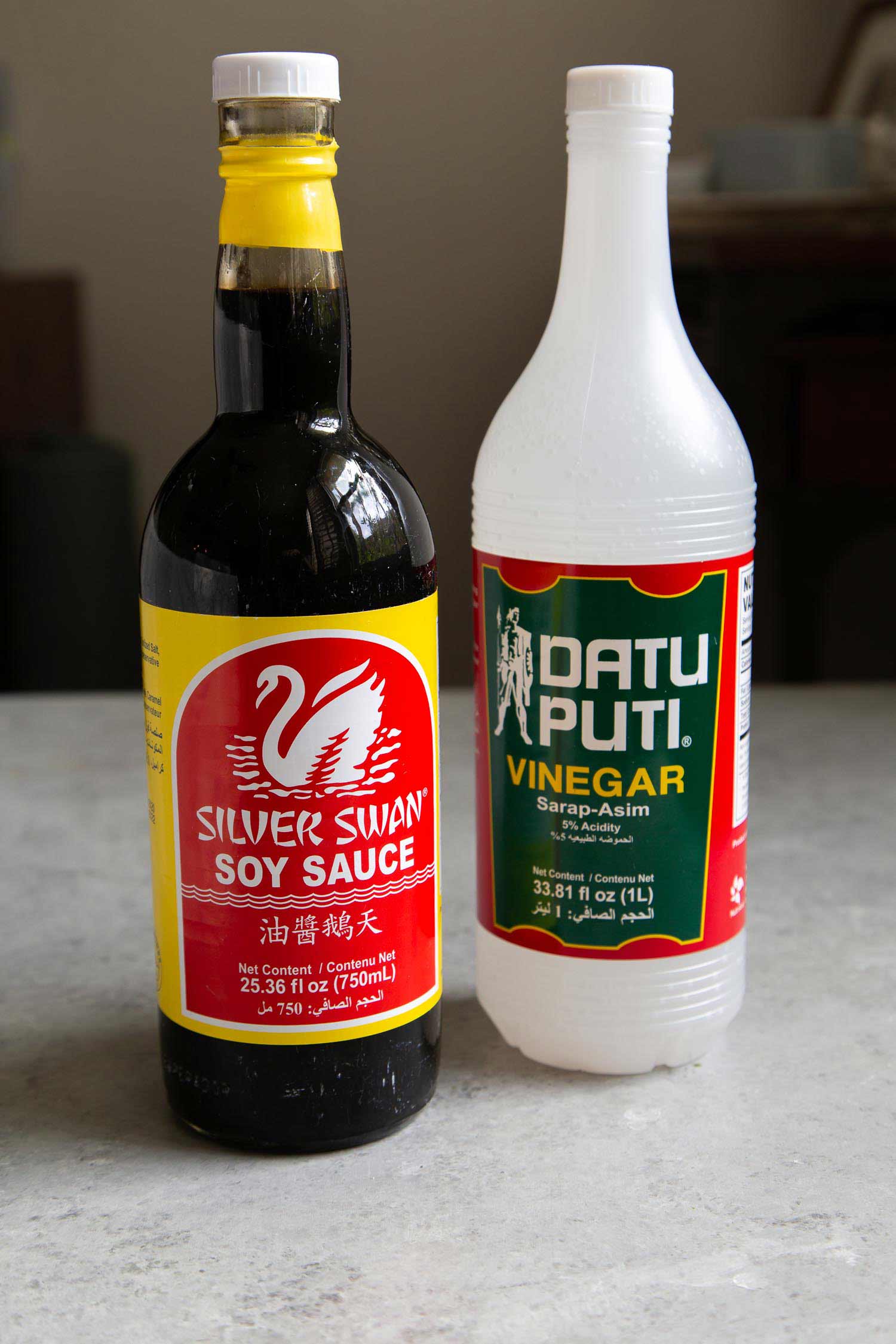
Soy Sauce & Vinegar Options For Adobo
Made this recipe with a variety of different soy sauces and vinegar.
For the most authentic flavor, use Filipino soy sauce and vinegar. Silver Swan and Datu Puti are very popular brands.
SOY SAUCE: However, you may also use the standard soy sauces and vinegars found in American supermarkets. I have made this recipe several times using Kikkoman Less Sodium Soy Sauce and regular Kikkoman Soy Sauce.
VINEGAR: Filipino coconut sap vinegar would be the most delicious option, but may be difficult to find in the United States.
Almost any vinegar will work in this recipe: distilled white vinegar, apple cider vinegar, white wine vinegar.
Stay away from balsamic vinegar, champagne vinegar, red wine vinegar, and rice vinegar. These vinegars do not have the bright acidity that makes adobo delicious.
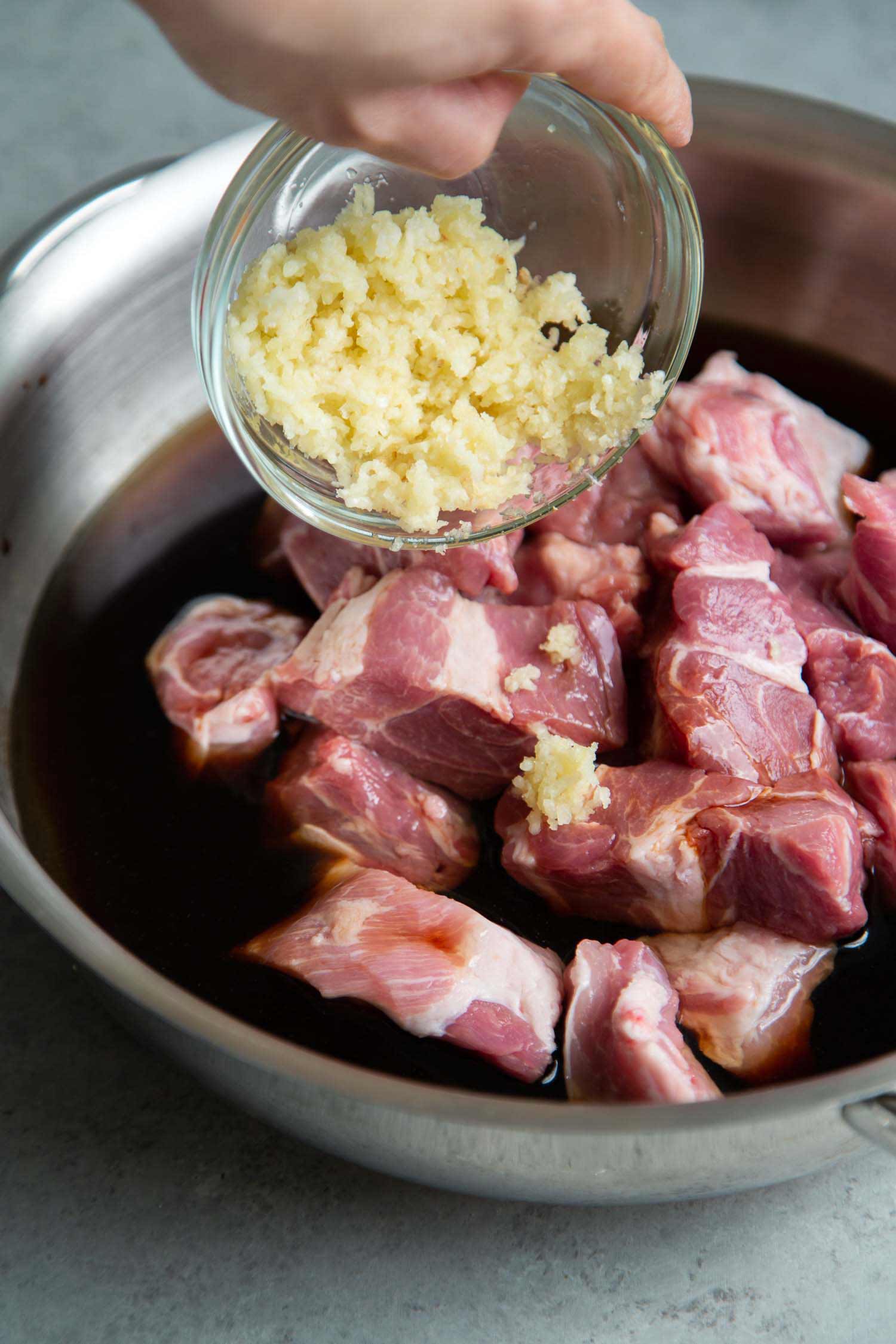
Easiest Way to Cook Filipino Adobo
- Place meat in a large skillet or sauce pot.
- Pour in soy sauce, vinegar, water, garlic, black peppercorn, and bay leaf.
- Bring to a boil. Cover pot, reduce heat, and cook for 30-40 minutes until meat is tender.
- Eat with rice!
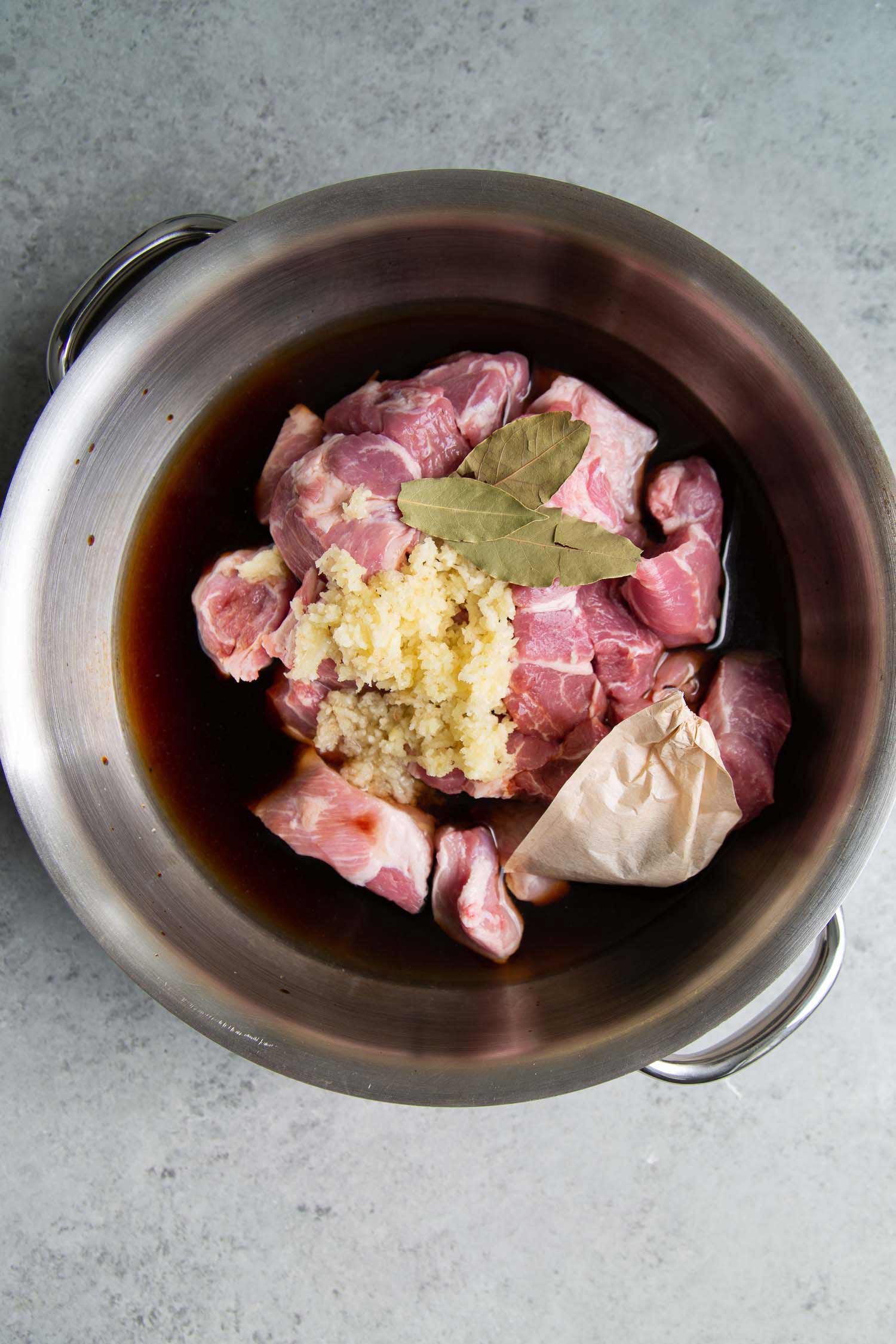
Pork adobo is super easy to make. This is the first Filipino main course dish I learned to make after leaving home for college. It is a staple recipe every Filipino should know how to make!
It’s a one pot dish that doesn’t require much effort. Simply cut up the meat into desired portions. Add in the soy sauce, vinegar, water, garlic, black peppercorns, and bay leaf.
This recipe uses an entire head of garlic. That ranges from 10 to 15 cloves of garlic, depending on the size of garlic bulb.
I prefer to use whole black peppercorns to flavor the adobo. Since I don’t want to fish out the peppercorns after cooking, I place the pepper in a tea sachet or cheesecloth bag for easy removal.

The braising liquid will reduce down into a super potent and flavorful sauce.
Taste and adjust seasoning according to your preferences. If sauce is too salty for your taste, add water one tablespoon at a time.
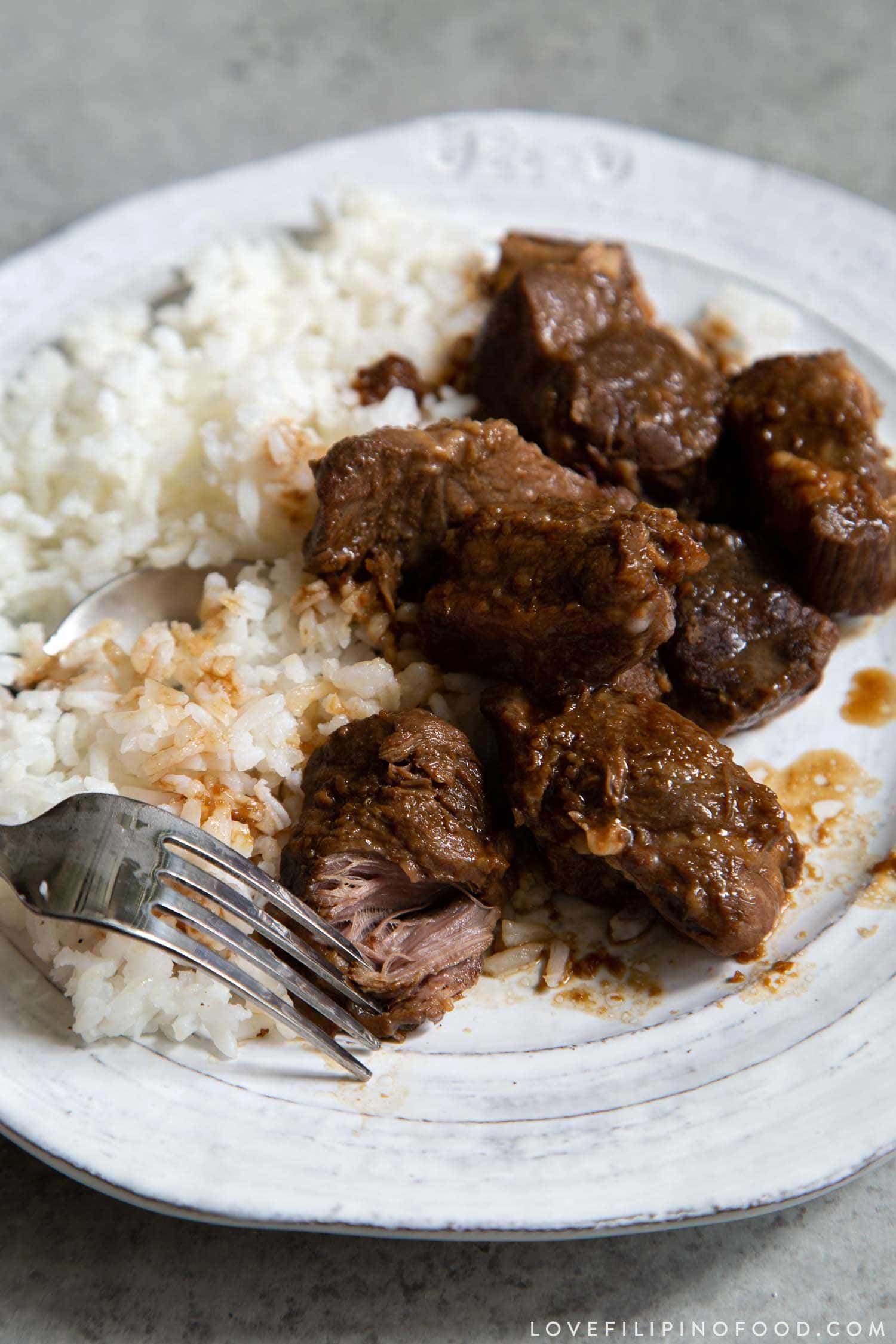
Best way to eat pork adobo
As with most braised meat dishes, pork adobo tastes even better the day after cooking. The resting time allows the meat to full absorb the flavors of the braising sauce.
Store leftover adobo in the fridge. When ready to eat, gently reheat in the microwave or stovetop.
Serve pork adobo hot with steamed jasmine rice.
Shred leftover pork adobo and toss into fried rice or bake into homemade pandesal!
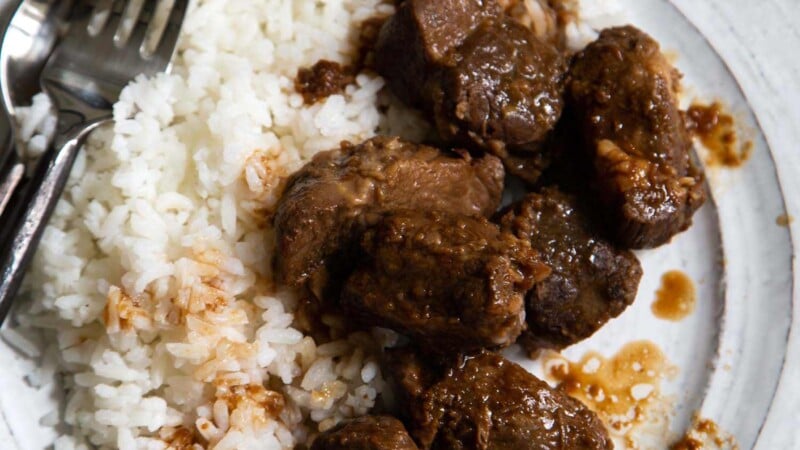
Pork Adobo
Equipment
- Saute pan
Ingredients
- 2 pounds pork shoulder, cut into 2-inch pieces
- 1 cup water
- ½ cup white vinegar
- ¼ cup sauce soy
- 1 head garlic, peeled and minced (about 10-15 cloves garlic)
- 1 Tbsp whole black peppercorns, (placed in a tea sachet or cheesecloth for easy removal)
- 3 pieces bay leaf , (dried laurel leaves)
Instructions
- Place cut pork shoulder in a large saute pan or sauce pot. Pour in water, vinegar, and sauce pot. Add garlic, peppercorn bag, and bay leaves.
- Set over medium-high heat and bring mixture to a boil. Reduce heat, cover pot, and let mixture simmer for 30-40 minutes until meat is tender. During cooking, occasionally turn pieces of meat for even braising.
- Taste sauce. Add additional soy sauce, vinegar, or water according to taste preferences. Before serving, remove black peppercorn bag and bay leaves.
- Serve with freshly cooked jasmine rice.
Notes
- Pork shoulder is also labeled as pork butt or Boston butt. This recipe also works with other proteins such as chicken, fish, beef, or goat.
- As with most braised meat dishes, pork adobo tastes even better the day after cooking. The resting time allows the meat to full absorb the flavors of the braising sauce.
- Store leftover adobo in an airtight container in the fridge for up to 3 days. When ready to eat, gently reheat in the microwave or stovetop.
- Leftover adobo can be chopped or shredded and tossed in fried rice or noodles.
Nutrition
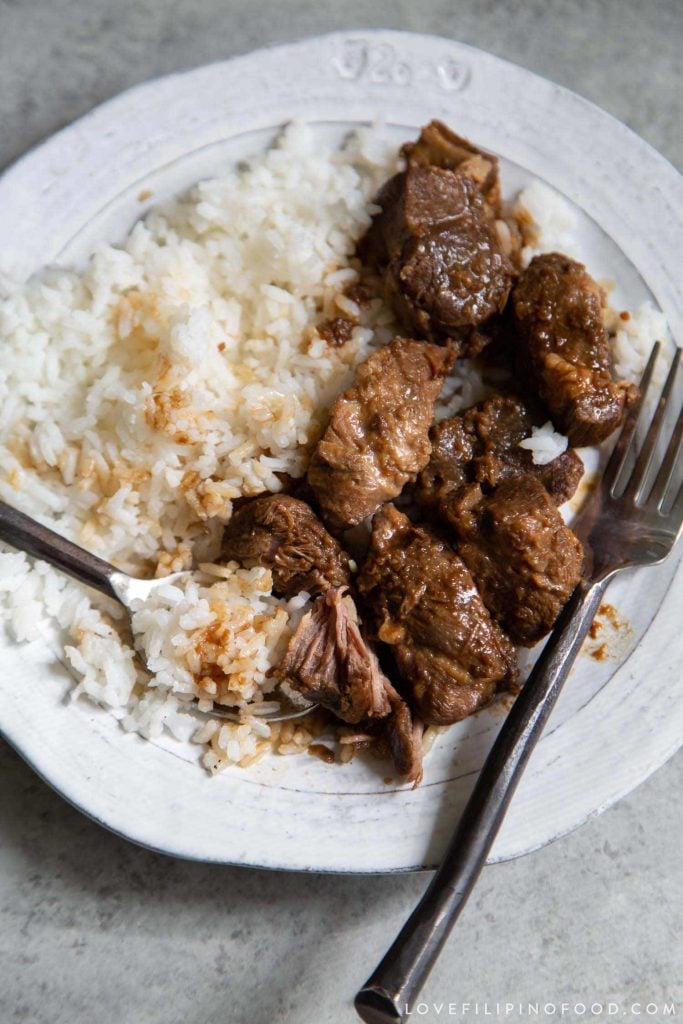






Hi Maryanne! I’m so happy to stumble upon this blog of yours 🙂 We love adobo and lots of other Filipino dishes. My friend used to make me chicken adobo when we were in high school, but I totally prefer this pork version, more fatty hehe…
I’m going to try this tonight! Thank you
Hi Maryanne,
Great recipe! I made it yesterday and we enjoyed it today. The pork was tender and flavorful. We will have it again for sure.
Hi, Maryanne. I am descended from German, Belgian, Swedish and English and also a lover of Philipino adobo. We purchased the Silver Swan and Datu Puti brands at our local Seafood City supermarket in Irvine, California.
Your Friend in Adobo,
Richard Bridinger
.years now ex wife is a great cook. She added hard boiled eggs and a starch. Potatoes are okay.